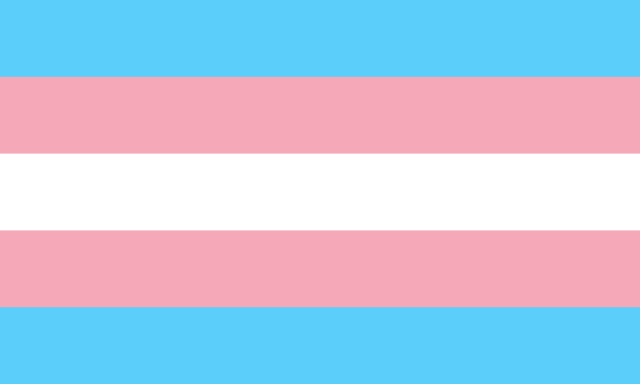Did you know that the first-ever transgender pride flag sits in the Smithsonian Museum?
The trans flag has a storied history branching from its conception in 1999 by transgender flag artist Monica Hems.
Use this guide to learn about the history of the transgender pride flag and the meaning behind its design and construction.
History of the Trans Flag
The first instance of the transgender flag colors being flown as an official “trans flag” was at a Pride parade in 2000, within a year of the flag’s creation.
It was flown by the creator, Monica Hems, in Phoenix, and soon spread to its current-day renown.
The trans flag is composed of five stripes, including two light blue stripes at the top and bottom, two light pink stripes in the middle, and a single white stripe down the center. This means that the transgender flag can be flown “correctly” either way it is positioned, up or down.
There is innate symbolism behind this, because the artist intended this to represent the experience of trans people finding correctness in life through their trans identity.
Transgender Flag Colors
Did you know that each color on this flag has its own significance? Each stripe correlates to and represents different parts of the transgender community.
While the trans community is large and varied, it is important to recognize and acknowledge the individual struggles of trans men and trans women, as well as intersex and nonbinary people.
The Light Blue Stripes
There are two blue stripes on the transgender pride flag. They are positioned at the very top and very bottom of the design, holding in the other pink and white stripes.
The blue that was used is a soft baby blue color, symbolizing the traditional color associate with a baby boy. As trans men assume their male identity in life, they experience a metaphorical rebirth.
This color celebrates this rebirth and affirms the male identity embraced by many trans men.
The Light Pink Stripes
The trans flag also has two pink stripes that sit between the blue and white stripes. The soft pink color is meant to represent the traditional color used for baby girls.
Trans women who embrace their womanhood can see themselves on this flag represented by the pink stripes.
These stripes celebrate the rebirth and gender euphoria experienced by many trans women as they transition into their true selves.
The White Stripe
There is a singular white stripe that runs the length of the flag, right down the middle. It is sandwiched between two light pink stripes.
This white stripe represents those in the community who are currently transitioning. It also represents intersex folks, as well as nonbinary and and gender expansive individuals.
While intersex and nonbinary people have their own separate pride flags, they are included under the umbrella of trans identities as well. This is because identities are often multi-faceted and overlapping.
Variations of the Transgender Flag
The trans flag recently merged with the standard rainbow pride flag for an expanded project called the Progress Pride Flag.
This flag includes the traditional rainbow, overlapped by a corner of the trans flag emerging from the flag pole.
Importantly, this improved flag also includes black and brown stripes to represent queer, nonbinary, and trans people of color.

The Meaning of the Trans Flag
As described above, the trans flag has deep meaning behind each color and stripe, with symmetry carefully integrated into the design as well. Taken together, this beautiful flag represents an entire community.
Will you wave the trans flag during Pride this year? Whether you identify as trans or want to support someone you love, you can’t go wrong with this beautiful pride flag.
